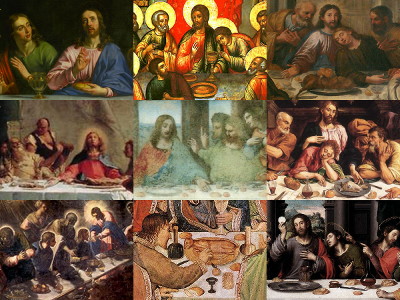Why did the cult group that sacred coconuts perish?

A German cult group 'Sonnenoden', which was established in Papua New Guinea, worshiped the sun and was campaigning to eat only coconuts that grow near the sun, but it was disbanded within a few years. I did it. Writer Zoe Bernard explains the group, which proved that 'people can't live on coconut alone.'
The Curious Case of August Engelhardt, Leader of a Coconut-Obsessed Cult --Gastro Obscura
In 1902, a man named August Engelhardt left Germany with a suitcase full of books and landed in Papua New Guinea. Engelhard began working in a pharmacy after studying physics and science at university, but was gradually influenced by the vegetarian and lifestyle reform movement that swept Germany at the time, and became increasingly interested in health. Therefore, Engelhard is said to have reached Papua New Guinea in search of his ideal 'paradise.' At that time Engelhard was 24 years old.
Upon arriving on the island, Engelhard bought a hut, abandoned his clothes and became a nudist, starting a coconut-centric vegetarian diet. Engelhard defines humans as 'tropical animals' and devises a philosophy that one should not live in the cave of a house, but in the sun, which provides healing and healing power. 'The brain, the most noble organ in humans, derives its energy from sunlight through the roots of the hair rather than the dirty digestive organs.' 'Coconut with a spherical, furry shell most resembles the human head. 'God created coconuts based on the human head.' He repeated sunbathing and coconut eating according to the idea that continuous consumption of coconuts leads people to immortality.
Although this idea was still advanced at the time, Engelhardt had contributed to a magazine dealing with vegetarianism, and people who were affected by the aforementioned lifestyle reform movement sympathized with Engelhardt's idea. .. At its peak, about 30 believers are said to have landed on the island to live the same life as Engelhardt.

However, the life that Engelhard wanted did not last long. The New York Times reports that between 1905 and 1906, two believers who gathered under Engelhard died shortly after their arrival. Over the next few years, several believers who were unable to get used to the warm climate and coconut-only diet died. The cause of death is said to have been malaria.
Engelhardt accused the dead believers of 'because they ate tropical fruits in addition to coconuts,' but he also suffered from ulcers and other illnesses. Although he was treated at a local hospital and headed for recovery, the above-mentioned death of the believer and anxiety caused by Engelhardt's illness attacked the believer, leading to the dissolution of Sonnenoden.
With the dissolution of Sonnenoden, the German government has banned further believers from joining Engelhardt. Engelhard started a new promotion to gain followers, but the government's eyes were strict, and he gradually moved to a life of writing a dissertation on the healing power of plants alone and studying the eating habits of local people. Start to do. The appearance of Engelhardt at that time can be seen in the photographs taken by tourists visiting the island.

Questions remain about the aftermath of Engelhardt, but all that is known is that the body was found on the beach in 1915. The corpse's legs were full of ulcers and weighed only 66 pounds.
'It may be easy to ridicule Engelhardt as a crazy cult leader, but according to Engelhardt's diary, he has been abused by his parents and desperately disliked women. He was, in a sense, a sympathetic person. Engelhardt is an artistic and visionary person who has many similarities to today's food movement. ' bottom.
Related Posts:
in Posted by log1p_kr







